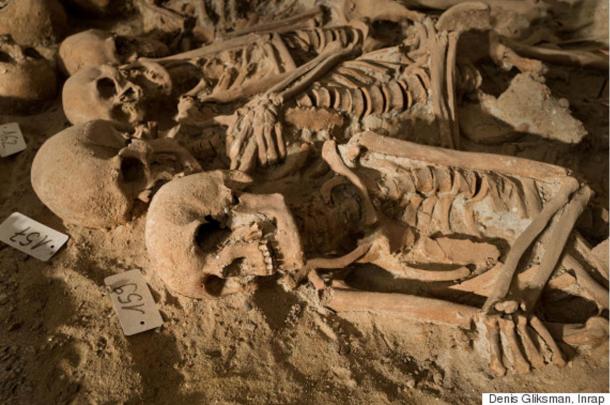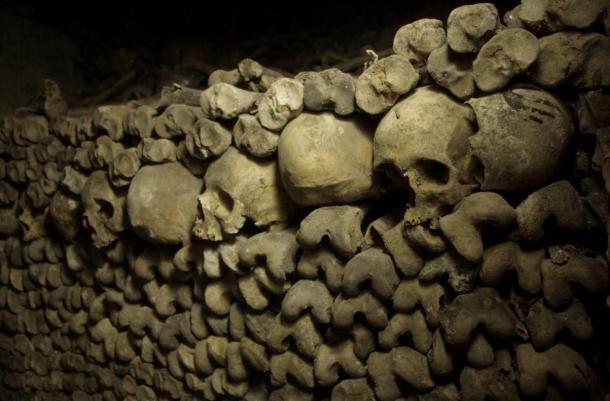
Archaeologists piece together final moments of hundreds of Medieval Parisians
The skeletons of more than 200 medieval Parisians have been moved for further study to a warehouse of the French National Institute for Preventive Archaeological Research in a suburb north of Paris, in order to unravel the mystery of their deaths.
A team from Inrap, as the institute is called, recently excavated the bodies after workers found them under the basement of a Monoprix supermarket in March. It is believed that the remains date from the 13th or 14th century AD.
“There are babies, there are young children, there are teenagers, there are adults, men, women, elderly people,” Isabelle Abadie, the lead archaeologist and anthropologist on the job, told The New York Times in an article of May 11, 2015. “This was a mortality crisis, that much is clear.”
The remains were excavated from the store's basement area near the medieval Hôpital de la Trinité, which closed during the French Revolution and then demolished in 1812. The Hôpital de la Trinité had once served as a shelter for the poor, a place for pilgrims and religious teachings, an infectious disease center and even a vocational school for children.
The skeletons are now in crates that contain hundreds of numbered plastic bags. Some of the bones have been washed with toothbrushes and water.

Two of the bodies before exhumation
The team worked from March until early May exhuming the bodies from eight graves that covered more than 1,000 square feet (93 square meters). Some of the bodies were stacked five deep. In the main burial pit there were 175 bodies set head to toe. The bodies in the other graves were jumbled, possibly an indication of a rush to bury victims of an intensifying epidemic, The New York Times said.
Scientists still have not done DNA and radiocarbon date testing. That may take months. But Abadie told the Times she knows they weren't victims of violence. “It could be the plague, it could be a famine, it can be many things at this stage — but there are no traces of trauma, so these aren’t deaths linked to an act of violence or war,” she said.
The burial site was the cemetery of the hospital from the 12th to the 17th centuries. Authorities thought the bodies had been moved in the 18th century to the Paris Catacombs. The catacombs house the bones of 6 million people transferred from Paris cemeteries 200 years ago.

Bones in the Paris catacombs (Janericloebe/Wikimedia Commons)
If the people did die of the plague, it was a common and grisly way to die at that time. The article titled ‘Black Death’ at Saylor.org says the plague killed an estimated 30 to 60 percent of Europe's population. By 1400 it reduced the world's population from an estimated 450 million to between 350 and 375 million.
“This has been seen as having created a series of religious, social and economic upheavals, which had profound effects on the course of European history. It took 150 years for Europe's population to recover. The plague returned at various times, killing more people, until it left Europe in the 19th century,” the Saylor.org site reports.
But if these people whose remains were just found this year died of plague, they went more quickly than if they experienced the slow-motion dying of starving to death in the event of famine.
Featured image: The scene at the supermarket, before the bones were removed (Denis Glikman/Inrap)
By Mark Miller
















Comments
This is an interesting question. Apparently, the bubonc plague bug, a bacterium, does survive in soil: http://www.ncbi.nlm.nih.gov/pmc/articles/PMC2600287/. Usually the germ would have to infect a flea and then the flea bite a human. But that link has cites the case of a person who got plague from the carcass of a mountain lion.
I always wonder if these findings of mass burials related to disease pose any health risks to those that dig them up and examine them. Can the soil be considered contaminated? Can pathogens go dormant?